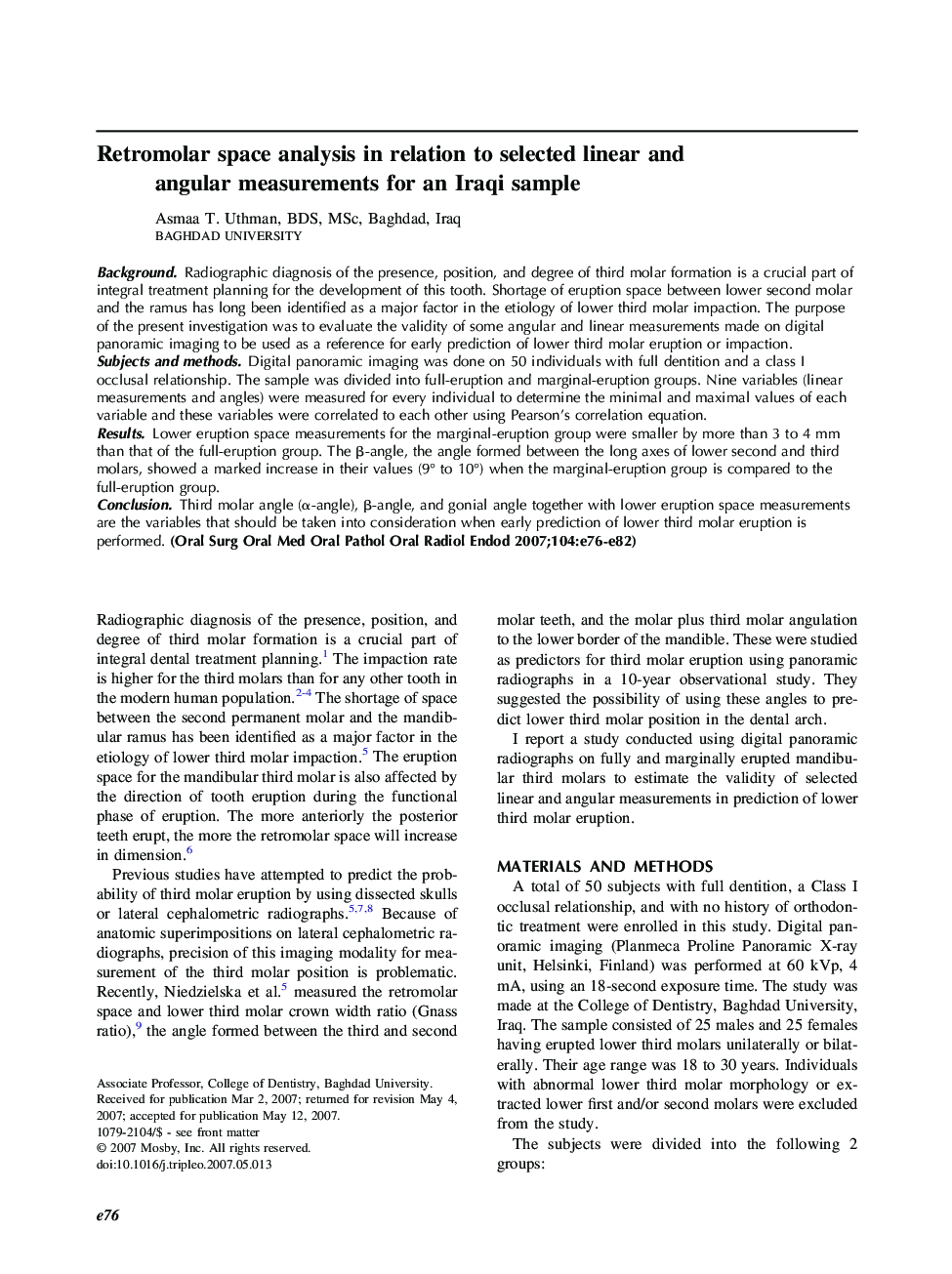| Article ID | Journal | Published Year | Pages | File Type |
|---|---|---|---|---|
| 3169309 | Oral Surgery, Oral Medicine, Oral Pathology, Oral Radiology, and Endodontology | 2007 | 7 Pages |
BackgroundRadiographic diagnosis of the presence, position, and degree of third molar formation is a crucial part of integral treatment planning for the development of this tooth. Shortage of eruption space between lower second molar and the ramus has long been identified as a major factor in the etiology of lower third molar impaction. The purpose of the present investigation was to evaluate the validity of some angular and linear measurements made on digital panoramic imaging to be used as a reference for early prediction of lower third molar eruption or impaction.Subjects and methodsDigital panoramic imaging was done on 50 individuals with full dentition and a class I occlusal relationship. The sample was divided into full-eruption and marginal-eruption groups. Nine variables (linear measurements and angles) were measured for every individual to determine the minimal and maximal values of each variable and these variables were correlated to each other using Pearson’s correlation equation.ResultsLower eruption space measurements for the marginal-eruption group were smaller by more than 3 to 4 mm than that of the full-eruption group. The β-angle, the angle formed between the long axes of lower second and third molars, showed a marked increase in their values (9° to 10°) when the marginal-eruption group is compared to the full-eruption group.ConclusionThird molar angle (α-angle), β-angle, and gonial angle together with lower eruption space measurements are the variables that should be taken into consideration when early prediction of lower third molar eruption is performed.
